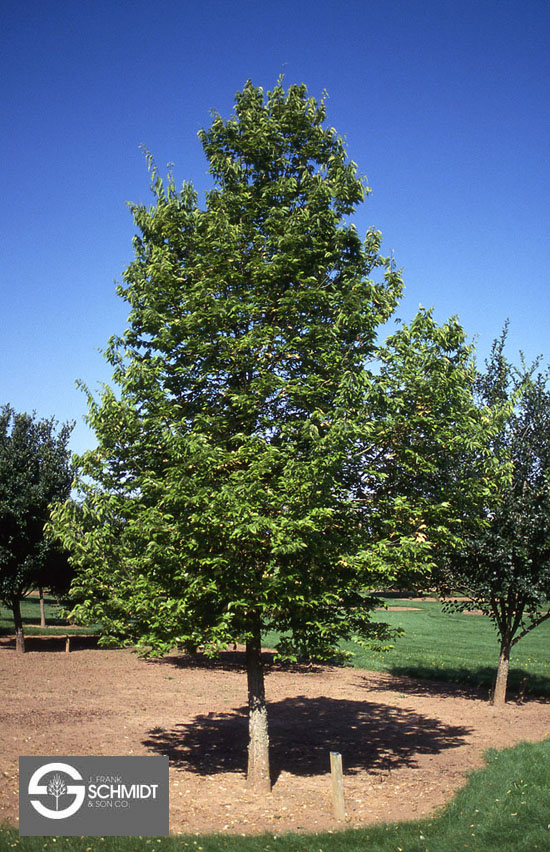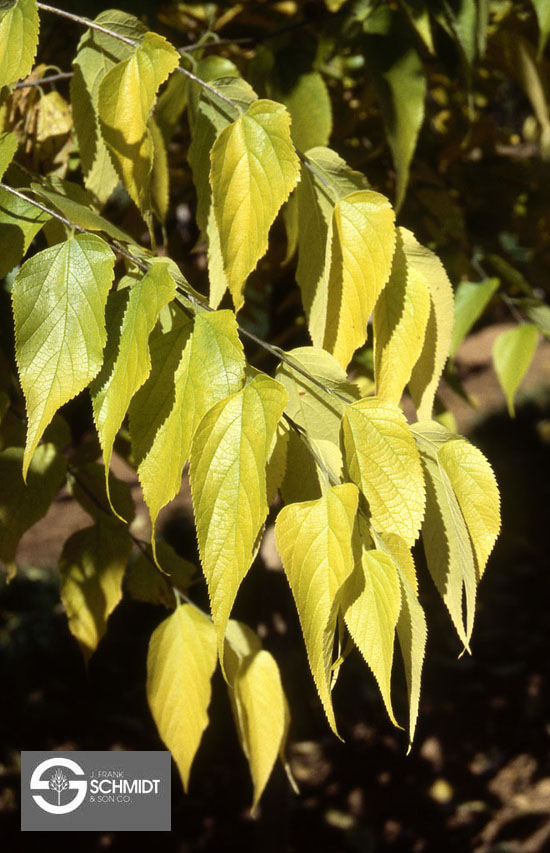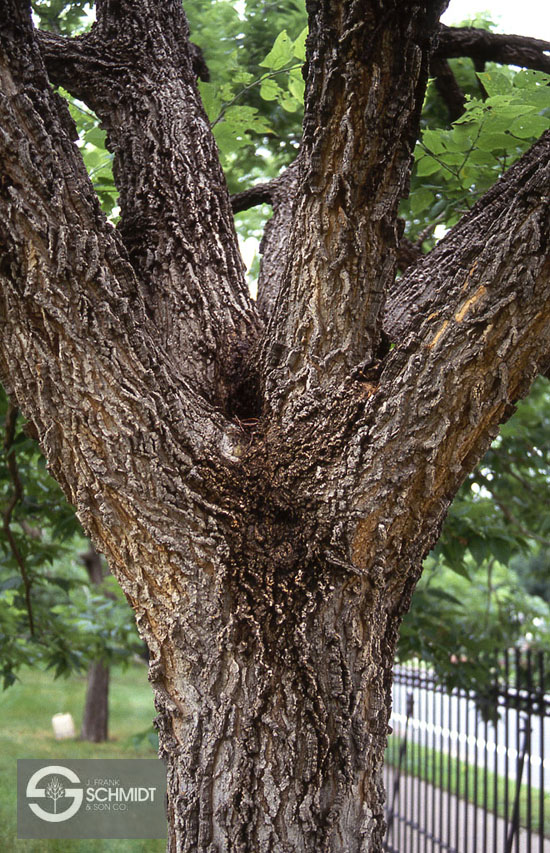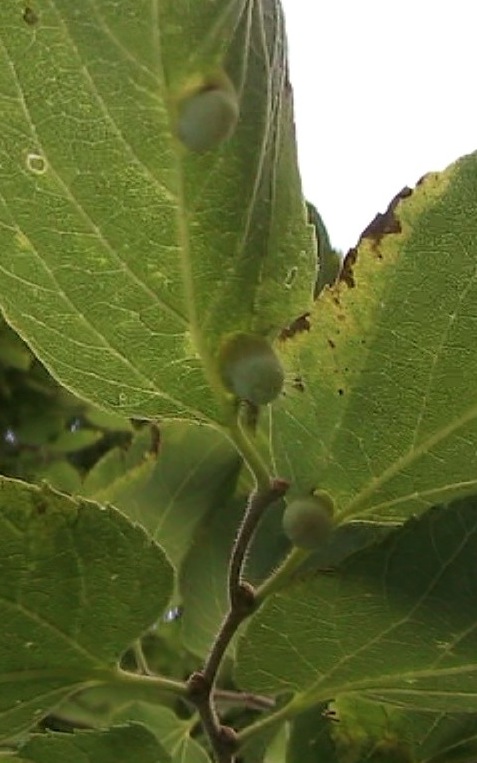| PSC 2620: Woody Trees and Shrub | Course Home | Week 6 |
Celtis occidentalis - Hackberry
Plant Viewer
 |
 |
| The Hackberry is a very tough and hardy tree that will grown under nearly any conditions. It forms a large 40-60 foot tall tree with a rather unkempt canopy. | The leaves are obliquely ovate in shape with an elongated tip. They are arranged alternately on the stem and have a serrated margin. Fall color is yellow. |
 |
 |
| The bark is very corky with many deep ridges and furrows. | Hackberry Nipple Gall is an ornamental pest, but it does not pose a health risk to the tree. |
Plant Description
Celtis occidentalis, or Hackberry, is a tough and hardy tree with a fast growth rate. It grows 40-60 feet high with an equal spread. It can be a bit wild looking in youth, but matures into a strong upright tree with arching branches. The bark is gray in color and has protruding cork growth that is reminiscent of a bad wall texture, unique but not particularly attractive. While not the most attractive tree, its ability to put up with almost anything makes it a good selection for difficult spots.
The green leaves are obliquely ovate in shape, with an elongated tip, and arranged alternately on the stem. They are 2-5 inches long with a serrated edge. In fall the leaves turn a dull yellow color. In the fall, red drupe fruit forms in small clusters. The fruit is edible and has a sweet date taste, though I know of no one who eats them other than birds. The fruit will drop, but the tree is usually pretty well cleaned by wildlife.
Landscape Use
Use in the difficult situations such as in hot and windy spots or open fields. Its ornamental failings limit its use in most residential settings.
Points of interest
Hackberry Nipple Gall is a major ornamental disease that strikes Hackberry. Insect larvae feeding on the leaves causes the leaf tissue to swell into a nipple-like protrusion on the leaf. It is not damaging to the tree, but is unattractive.